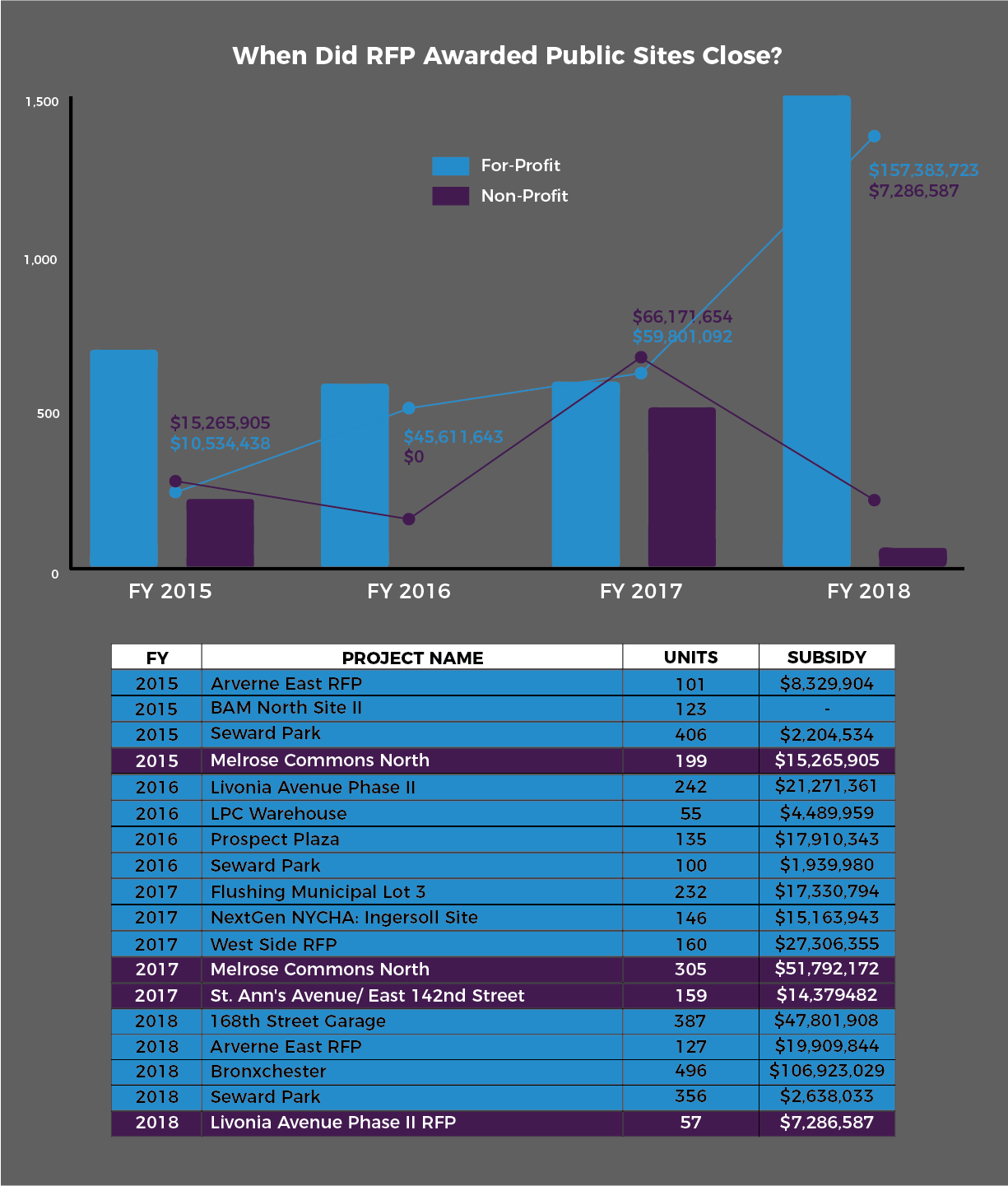42% of the total units developed to date were for Low-Income households; 25% were developed for Very Low-Income households; and 17% were built to Extremely Low- Income households. However, these numbers are the inverse of the actual city-wide need. Very Low- and Extremely Low-Income households make up 41.4% of the City’s population, while Low-Income households only make up 16.3% of the City’s population.
In 2015, the de Blasio Administration issued a new affordable housing term sheet that reached Extremely Low-and Very Low-Income levels of affordability. Units built at these affordability levels represent 42% of the total units built under de Blasio’s housing plan, showcasing how revised term sheets have allowed for deeper affordability.
There are 234,520 city-backed affordable units that will reach the expiration of their initial affordability between 2017 and 2037. There is no way to accurately predict which of these units or how many will lose their affordability through a developer choosing to opt-out. However, the past few years indicate that units controlled by mission-driven non-profit developers will see their affordability restrictions renewed, while buildings controlled by for-profit developers will face the danger of opting out of affordability restriction when the initial regulatory agreement expires.
The City has implemented a number of policies to address the expiring-use crisis, such as issuing new regulatory requirements to ensure all affordable housing built on city-owned land through the Request for Proposal (RFP) process maintains affordability in perpetuity, requiring all affordable units built under the Mandatory Inclusionary Housing (MIH) program are permanently affordable, and more. However, while new development financed under a city-issued RFP is protected, that is only one category of city-financed housing.
Since mission-driven non-profit developers make development decisions independent of an individual bottom-line economic interest, it is understood that they can deliver an especially high level of public value. However, for-profit developers accounted for 71% of new construction deals, while non-profit developers accounted for just 29% of new construction deals.
The four-year Fiscal Year data analyzed shows that 35% of the total new construction units developed by non-profit developers were Extremely Low-Income units, compared to 18% of the total new construction units developed by for-profit developers. Yet, in Fiscal Year 2018, for-profits accounted for 75% of new construction units, while non-profits developed 25% of the units.
Although the discrepancy between mission-driven developers and their for-profit counterparts is not as great as it is in new construction units, the data shows an imbalance between the number of deals closed and the number of units preserved, with for-profits accounting for 67% of the preservation units while non-profit developers accounted for only 33% of preservation units.
The discrepancy between the percentage of projects on city-owned land awarded to mission-driven non-profit verses for-profit developers has decreased since Mayor de Blasio took office, but it is still not high enough to secure permanently affordable housing by mission-driven developers on public land. Between July 2014 and June 2018, 75% of RFP-selected new construction projects went to for-profit developers and 25% went to non-profit developers.
There is an imbalance of the total amount of city subsidy allocated to each category of developer, with for-profit developers receiving 72% of the total subsidy allocated between July 2014 and June 2018.


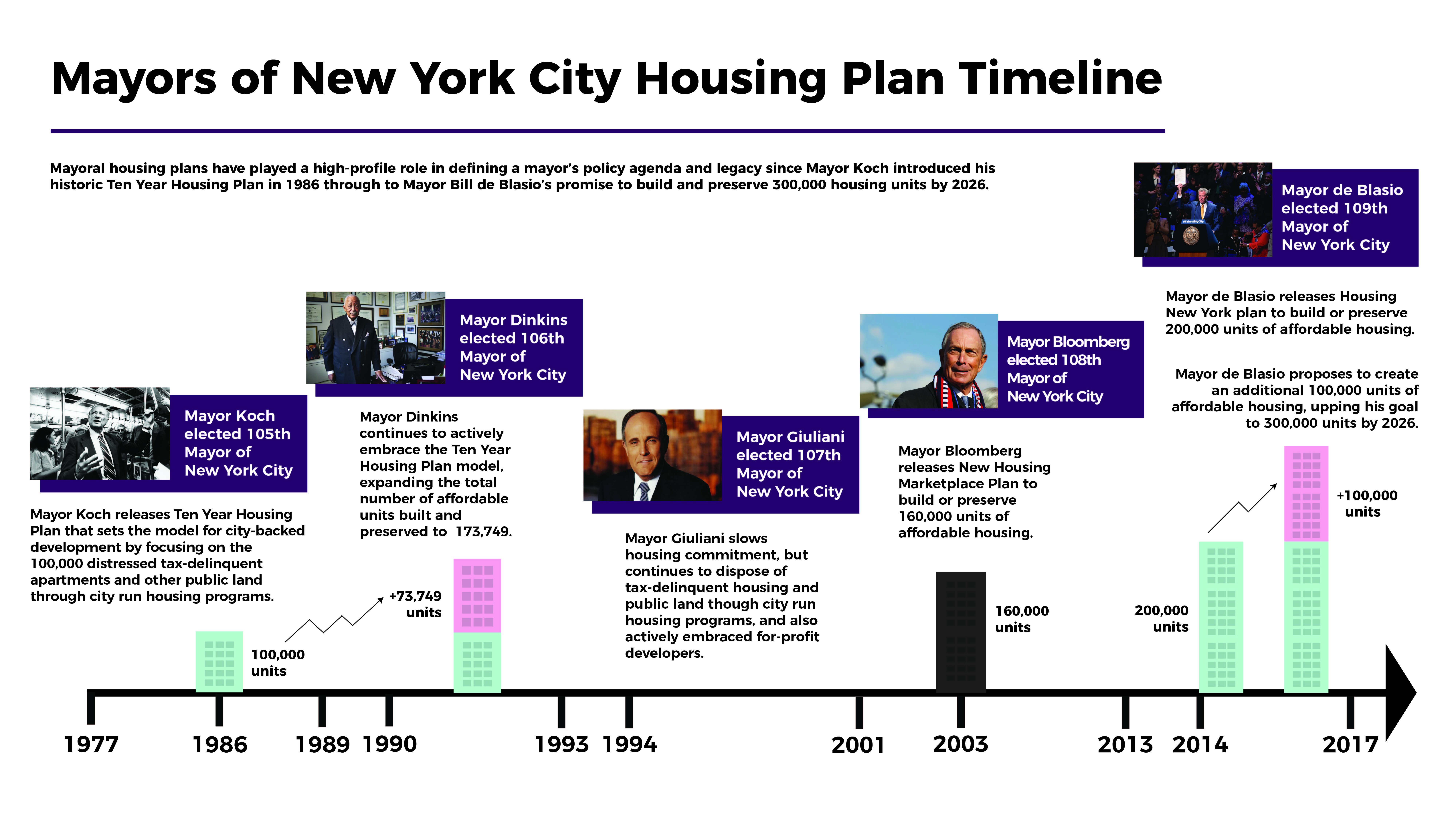
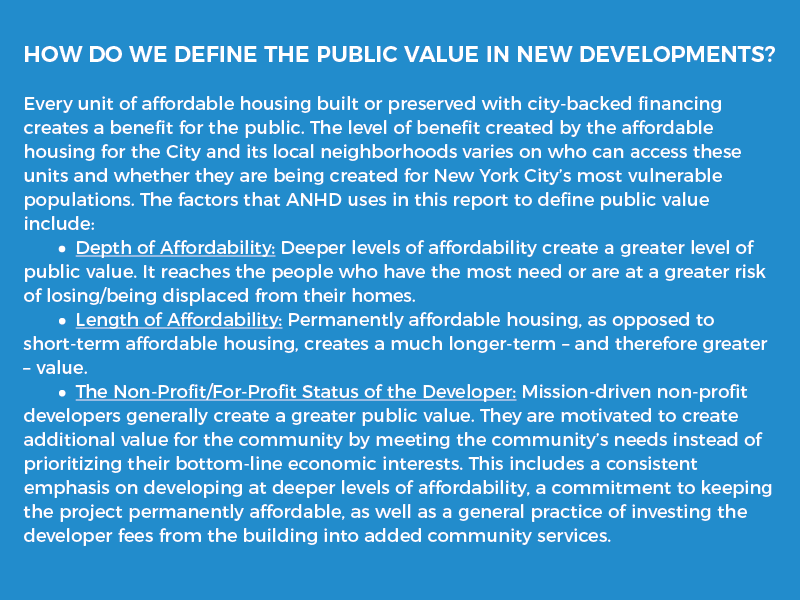
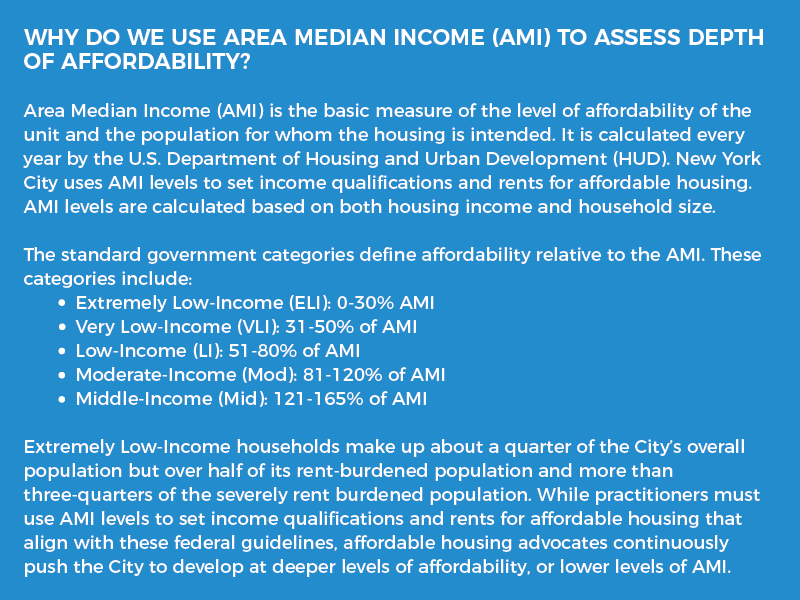
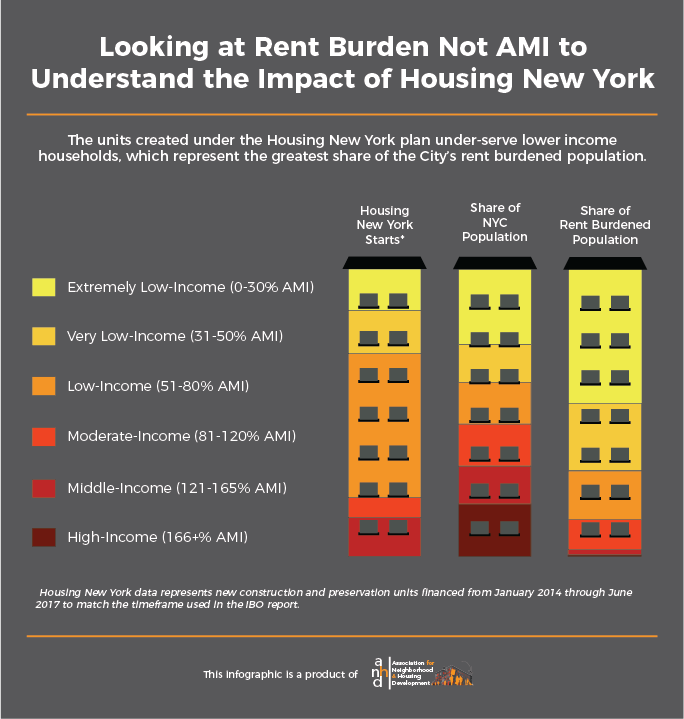 Over the past six years, the de Blasio Administration has taken steps to create financing tools and policies that can achieve deeper levels of affordability and better align the income level of the housing that is built with the local- and city-wide need.
Over the past six years, the de Blasio Administration has taken steps to create financing tools and policies that can achieve deeper levels of affordability and better align the income level of the housing that is built with the local- and city-wide need. 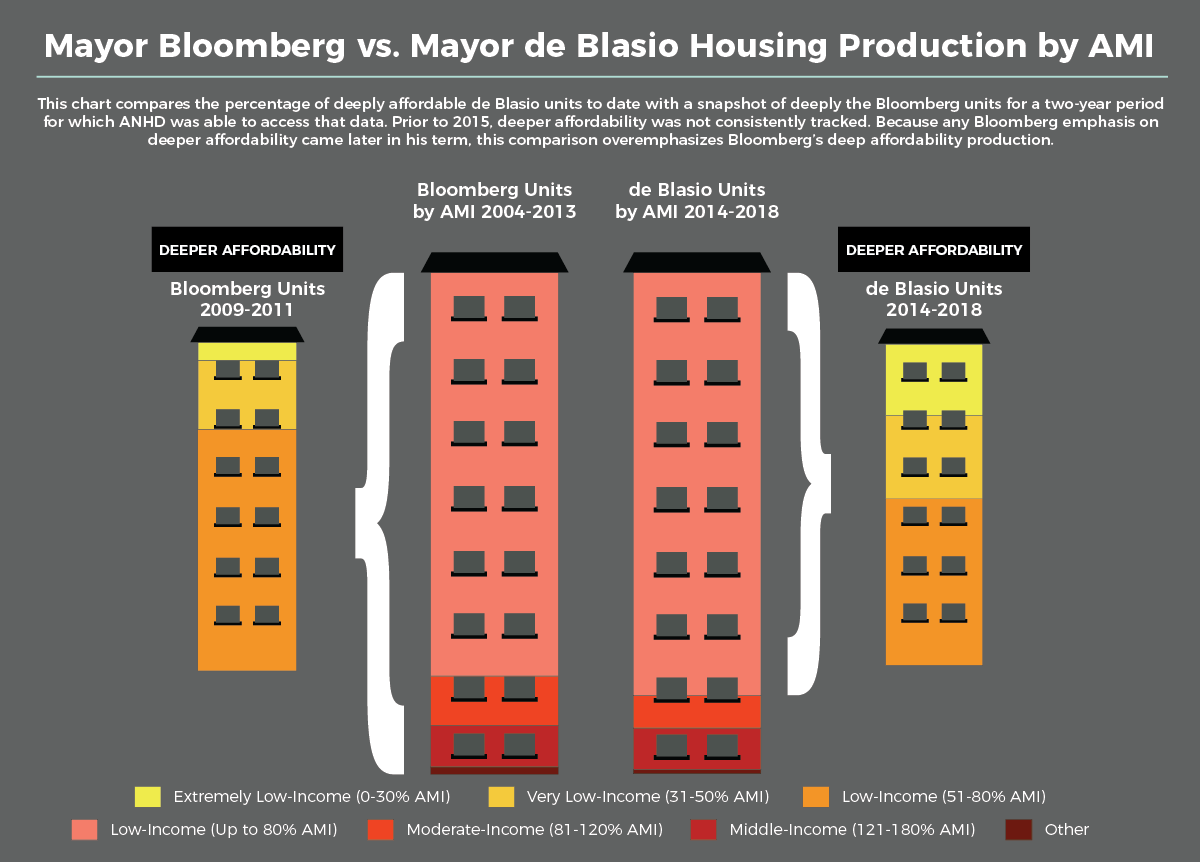 From the Koch Administration on, the affordability level of most city-backed affordable housing has been pegged to a standard range set by the federal Low-Income Housing Tax Credit (LIHTC) and Private Activity Bond (PAB), which are the core financing tools for most affordable deals. The most standard range for LIHTC and PAB terms sits at 60% of AMI or $57,660 for a household of three; however, the City can layer additional financing or requirements in city-backed deals to bring the AMI level more in-line with local needs and policy goals.
From the Koch Administration on, the affordability level of most city-backed affordable housing has been pegged to a standard range set by the federal Low-Income Housing Tax Credit (LIHTC) and Private Activity Bond (PAB), which are the core financing tools for most affordable deals. The most standard range for LIHTC and PAB terms sits at 60% of AMI or $57,660 for a household of three; however, the City can layer additional financing or requirements in city-backed deals to bring the AMI level more in-line with local needs and policy goals. 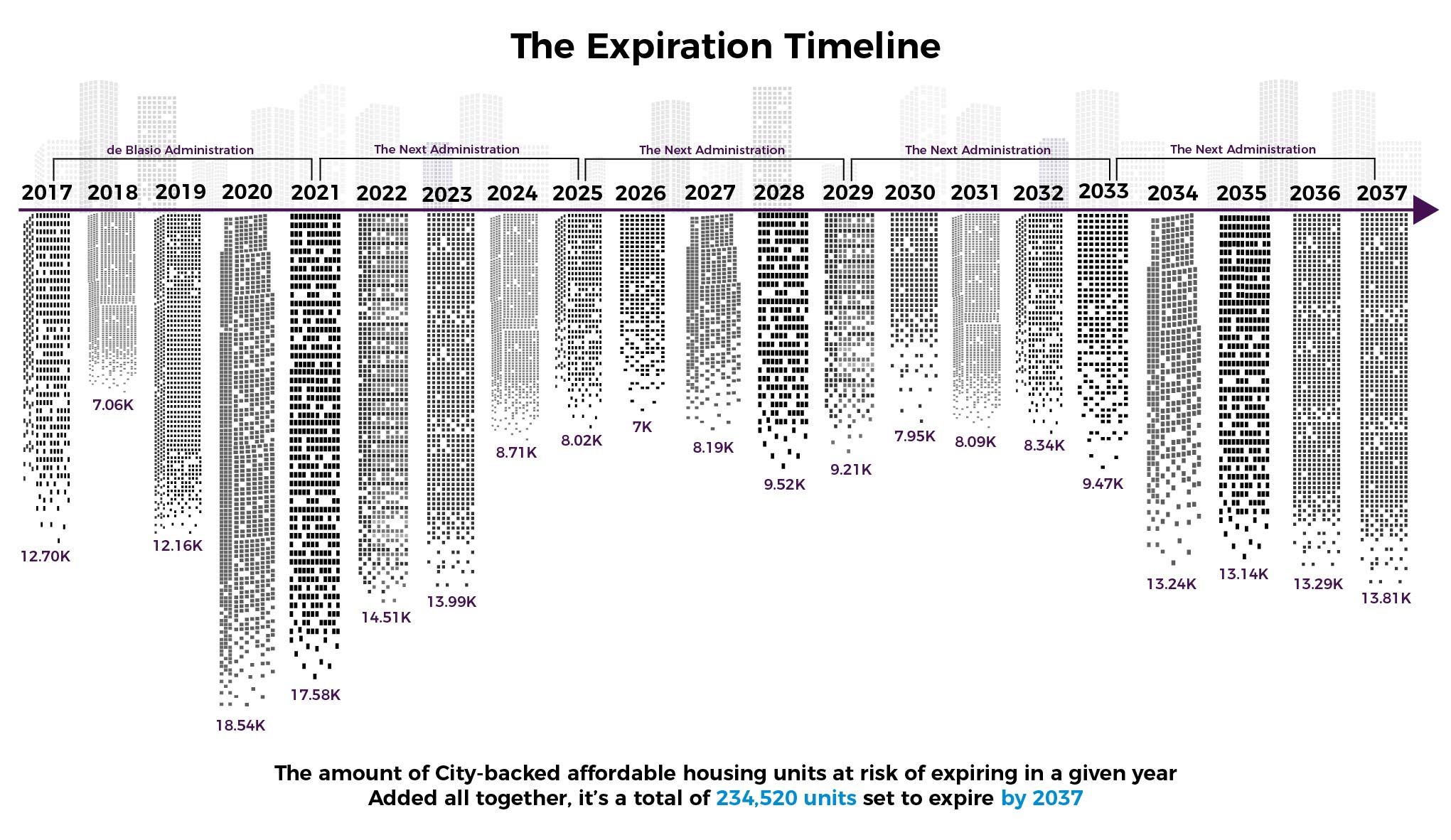
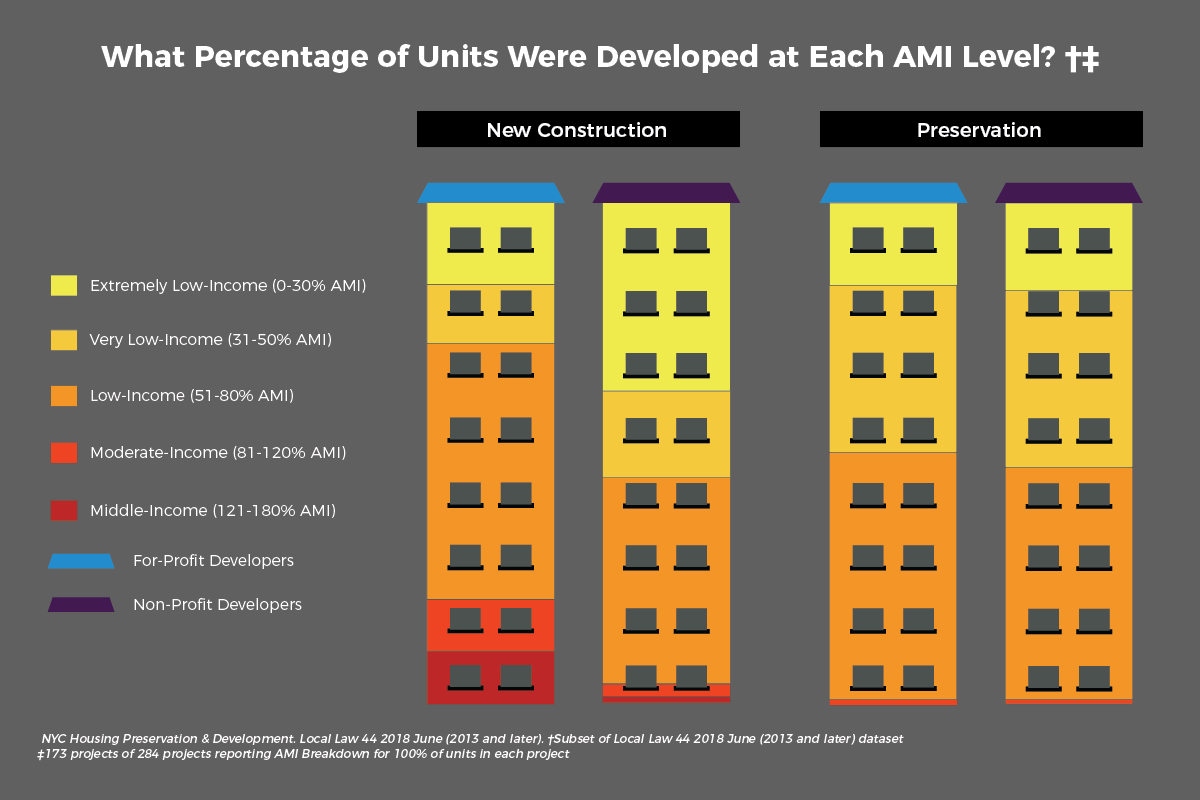
 The City awards subsidies on a competitive basis for developers who build affordable housing on privately-owned or publicly-owned land. Local Law 44 data shows that for-profits close more deals than mission-driven non-profit developers on a yearly basis. For-profit developers accounted for 85% of the new construction units, while non-profit developers accounted for 15% of the new construction units in Fiscal Year 2015. In Fiscal Year 2016, the number of units developed by for-profit developers decreased significantly, although they accounted for 73% of the total new construction units for the year. Non-profit developers were constructing more units than they did the prior fiscal year, but still only accounted for 27% of the new construction units. For-profit developers accounted for 81% of the new construction units in Fiscal Year 2017, while non-profit developers accounted for only 19%. In Fiscal Year 2018, for-profits accounted for 75% of new construction units, while non-profits developed 25% of the units.
The City awards subsidies on a competitive basis for developers who build affordable housing on privately-owned or publicly-owned land. Local Law 44 data shows that for-profits close more deals than mission-driven non-profit developers on a yearly basis. For-profit developers accounted for 85% of the new construction units, while non-profit developers accounted for 15% of the new construction units in Fiscal Year 2015. In Fiscal Year 2016, the number of units developed by for-profit developers decreased significantly, although they accounted for 73% of the total new construction units for the year. Non-profit developers were constructing more units than they did the prior fiscal year, but still only accounted for 27% of the new construction units. For-profit developers accounted for 81% of the new construction units in Fiscal Year 2017, while non-profit developers accounted for only 19%. In Fiscal Year 2018, for-profits accounted for 75% of new construction units, while non-profits developed 25% of the units.  Affordable housing preservation deals represent the majority of units in the de Blasio housing plan. An analysis of preservation units in Local Law 44 data shows that non-profit developers accounted for 41% of preservation deals, and for-profit developers accounted for 59% of preservation deals. Although the discrepancy between mission-driven developers and their for-profit counterparts is not as great as it is in new construction units, the data shows an imbalance between the number of deals closed and the number of units preserved, with for-profits accounting for 67% of the preservation units while non-profit developers accounted for only 33% of preservation units. This means for-profit developers are closing 42% more projects and working on larger-scale projects that yield significantly more units than non-profit deals.
Affordable housing preservation deals represent the majority of units in the de Blasio housing plan. An analysis of preservation units in Local Law 44 data shows that non-profit developers accounted for 41% of preservation deals, and for-profit developers accounted for 59% of preservation deals. Although the discrepancy between mission-driven developers and their for-profit counterparts is not as great as it is in new construction units, the data shows an imbalance between the number of deals closed and the number of units preserved, with for-profits accounting for 67% of the preservation units while non-profit developers accounted for only 33% of preservation units. This means for-profit developers are closing 42% more projects and working on larger-scale projects that yield significantly more units than non-profit deals. 